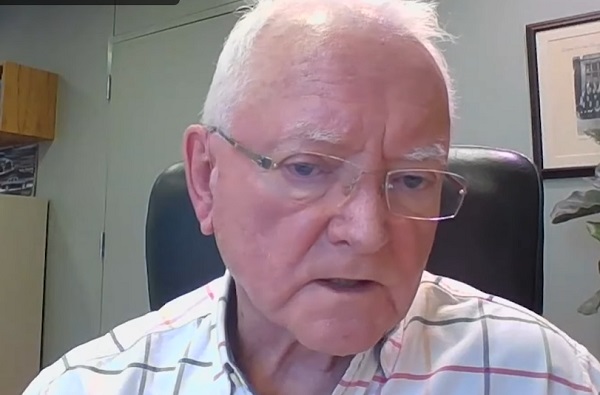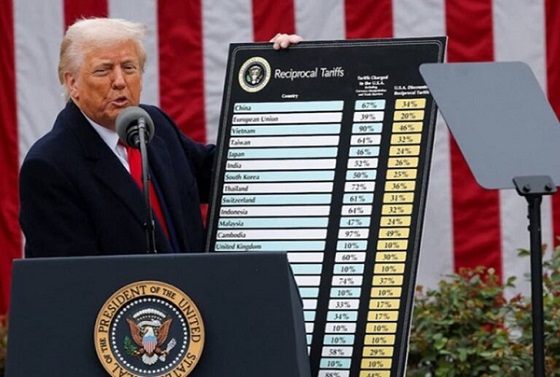Alberta
It’s Open!

The Gaetz Avenue interchange is now open to traffic.
From the Province of Alberta
Gaetz Avenue interchange open in Red Deer
As the 2018 construction season comes to a close, the Highway 2/Gaetz Avenue interchange in Red Deer is fully open to traffic.
The new interchange will improve traffic flow and safety for highway travellers, local residents and commuters and businesses in the Red Deer area.
“This section of the QEII has always been a pinch-point for motorists. Alberta Transportation, the City and County of Red Deer, along with the contractor, worked diligently to make sure we could safely open the interchange in time for the Canada Winter Games this February. This new interchange improves the flow of traffic and increases safety on a heavily travelled stretch of highway.”
“Our community appreciates the modernized QEII interchange with Gaetz Avenue that is now open to traffic. The new interchange will greatly enhance safety and improve access for citizens in Red Deer and region, as well as for the thousands of our fellow Canadians who will be joining us from across our country for the Canada Winter Games.”
“Red Deer County is thrilled to see the Gaetz Avenue interchange project come to a conclusion. This was a massive project, and, in only two years, we have completely changed the way that motorists access Gasoline Alley and the City of Red Deer. This project has improved vehicle safety and efficiency – which creates even greater demand for local businesses. We are also excited to see the beginning of a new business area adjacent to the highway, at the Junction of Highways 2 and 42.”
Construction of the $80 million Highway 2/Gaetz Avenue interchange began in 2016. The project includes five new bridges, new on and off ramps for northbound and southbound traffic, the widening and realignment of Highway 2 and the integration of the Taylor Drive and Gaetz Avenue interchanges. Minor finishing work, such as final paving, signage, guardrail installation and landscaping, will be completed in 2019.
The project was one of more than 195 projects included in the 2018 Construction Program. Of those projects, 139 will be completed by the end of the fiscal year and 56, which are multi-year projects, will continue in the 2019 construction season.
2018 construction season highlights:
- Five year budget for highways and bridges – $5.6 billion
- 2018-19 fiscal year – $1.1 billion
- 2018-19 fiscal year to the end of September, 2018 – $719 million
- 1,100 kilometres of roads were maintained with pavement rehabilitation work in 2018, which is equivalent to the driving distance between Edmonton and Brandon, Man.
Southwest Calgary Ring Road
- Construction of the Southwest Ring Road is now more than 40 per cent complete with full completion scheduled for October 2021.
- River channel alignment works are complete at all three locations.
- More than 90 per cent of utility realignment is complete.
Highway 43X bypass (Grande Prairie)
- The roundabout at Highway 43X and Range Road 63 opened in mid-September.
Peace River Bridge
- Work continues on the west side at the Shaftesbury Interchange and the CN Rail overpass.
- All project components (except the main bridge) are expected to open during fall 2019.
- Completion of the 98 Street overpass is expected during summer 2019.
- The main bridge is on schedule to open during fall 2020.
Highway 19
- Work on the east section of the project is expected to be complete in 2019.
- During the winter of 2018-19, two lanes per direction are expected to open to traffic.
- Construction of a roundabout at Highway 39 and 60 is expected begin in 2019.
Highway 15 twinning and related work
- Design is underway for the overall Highway 15 twinning project.
- Construction is anticipated to begin in 2019, and is estimated to take about three years.
- Repaving of four kilometres of highway between Edmonton and Fort Saskatchewan was completed in 2017.
- Upgrades to the existing bridge substructures, concrete piers, guardrails and drainage system was completed in 2017.
Alberta
Medical regulator stops short of revoking license of Alberta doctor skeptic of COVID vaccine

From LifeSiteNews
The Democracy Fund has announced that COVID-skeptic Dr. Roger Hodkinson will retain his medical license after a successful appeal against allegations of ‘unprofessional conduct’ by the College of Physicians and Surgeons of Alberta.
A doctor who called for officials to be jailed for being complicit in the “big kill” caused by COVID measures will get to keep his medical license thanks to a ruling by a Canadian medical regulator.
The Democracy Fund (TDF) announced in an April 4 press release that one of its clients, Dr. Roger Hodkinson, will retain his medical license after filing an appeal with the College of Physicians and Surgeons of Alberta (CPSA) over allegations of “unprofessional conduct regarding 17 public statements made in November 2020 and April 2021.”
Hodkinson had routinely argued against the dictates of public health and elected officials and “presented an alternative perspective on COVID-19, including the efficacy of masking and vaccines,” TDF noted.
In 2021, Hodkinson and Dr. Dennis Modry publicly blasted the then-provincial government of Alberta under Premier Jason Kenney for “intimidating” people “into compliance” with COVID-19 lockdowns.
In 2022, Hodkinson said that leaders in Canada and throughout the world have perpetrated the “biggest kill ever in medicine’s history” by coercing people into taking the experimental COVID injections and subjecting them to lengthy lockdowns.
These statements, among others, led the CPSA to claim that Hodkinson had promoted inaccurate or misleading information. “However, following negotiations with lawyers for The Democracy Fund, the CPSA limited its claims to arguing that Dr. Hodkinson’s comments violated the ethical code and extended beyond the scope of a general pathologist.”
Thus, Hodkinson did not “concede that any of his statements were false,” but “acknowledged that his criticisms of other physicians technically breached the Code of Ethics and Professionalism,” the group explained. “He also admitted that he should have clarified that his views were outside the scope of a general pathologist.”
Instead of having his license revoked, TDF stated that Dr. Hodkinson received a “caution” and will have to “complete an online course on influence and advocacy.”
“However, he did not concede that any of his statements were misinformation, nor did the tribunal make such a determination,” noted lawyer Alan Honner.
While Hodkinson received a slap on the wrist, a number of Canadian doctors have faced much harsher sanctions for warning about the experimental vaccines or other COVID protocols such as lockdowns, including the revocation of their medical licenses, as was the case with Dr. Mark Trozzi and others.
Some of Hodkinson’s warnings seem to have been vindicated by the current Alberta government under Premier Danielle Smith, who commissioned Dr. Gary Davidson to investigate the previous administration’s handling of COVID-19.
Davidson’s report, which was made public earlier this year, recommended the immediately halt of the experimental jabs for healthy children and teenagers, citing the risks the shots pose.
Alberta
Province introducing “Patient-Focused Funding Model” to fund acute care in Alberta

Alberta’s government is introducing a new acute care funding model, increasing the accountability, efficiency and volume of high-quality surgical delivery.
Currently, the health care system is primarily funded by a single grant made to Alberta Health Services to deliver health care across the province. This grant has grown by $3.4 billion since 2018-19, and although Alberta performed about 20,000 more surgeries this past year than at that time, this is not good enough. Albertans deserve surgical wait times that don’t just marginally improve but meet the medically recommended wait times for every single patient.
With Acute Care Alberta now fully operational, Alberta’s government is implementing reforms to acute care funding through a patient-focused funding (PFF) model, also known as activity-based funding, which pays hospitals based on the services they provide.
“The current global budgeting model has no incentives to increase volume, no accountability and no cost predictability for taxpayers. By switching to an activity-based funding model, our health care system will have built-in incentives to increase volume with high quality, cost predictability for taxpayers and accountability for all providers. This approach will increase transparency, lower wait times and attract more surgeons – helping deliver better health care for all Albertans, when and where they need it.”
Activity-based funding is based on the number and type of patients treated and the complexity of their care, incentivizing efficiency and ensuring that funding is tied to the actual care provided to patients. This funding model improves transparency, ensuring care is delivered at the right time and place as multiple organizations begin providing health services across the province.
“Exploring innovative ways to allocate funding within our health care system will ensure that Albertans receive the care they need, when they need it most. I am excited to see how this new approach will enhance the delivery of health care in Alberta.”
Patient-focused, or activity-based, funding has been successfully implemented in Australia and many European nations, including Sweden and Norway, to address wait times and access to health care services, and is currently used in both British Columbia and Ontario in various ways.
“It is clear that we need a new approach to manage the costs of delivering health care while ensuring Albertans receive the care they expect and deserve. Patient-focused funding will bring greater accountability to how health care dollars are being spent while also providing an incentive for quality care.”
This transition is part of Acute Care Alberta’s mandate to oversee and arrange for the delivery of acute care services such as surgeries, a role that was historically performed by AHS. With Alberta’s government funding more surgeries than ever, setting a record with 304,595 surgeries completed in 2023-24 and with 310,000 surgeries expected to have been completed in 2024-25, it is crucial that funding models evolve to keep pace with the growing demand and complexity of services.
“With AHS transitioning to a hospital-based services provider, it’s time we are bold and begin to explore how to make our health care system more efficient and manage the cost of care on a per patient basis. The transition to a PFF model will align funding with patient care needs, based on actual service demand and patient needs, reflecting the communities they serve.”
“Covenant Health welcomes a patient-focused approach to acute care funding that drives efficiency, accountability and performance while delivering the highest quality of care and services for all Albertans. As a trusted acute care provider, this model better aligns funding with outcomes and supports our unwavering commitment to patients.”
“Patient-focused hospital financing ties funding to activity. Hospitals are paid for the services they deliver. Efficiency may improve and surgical wait times may decrease. Further, hospital managers may be more accountable towards hospital spending patterns. These features ensure that patients receive quality care of the highest value.”
Leadership at Alberta Health and Acute Care Alberta will review relevant research and the experience of other jurisdictions, engage stakeholders and define and customize patient-focused funding in the Alberta context. This working group will also identify and run a pilot to determine where and how this approach can best be applied and implemented this fiscal year.
Final recommendations will be provided to the minister of health later this year, with implementation of patient-focused funding for select procedures across the system in 2026.
-

 Catherine Herridge2 days ago
Catherine Herridge2 days agoFBI imposed Hunter Biden laptop ‘gag order’ after employee accidentally confirmed authenticity: report
-

 Crime2 days ago
Crime2 days agoFirst Good Battlefield News From Trump’s Global War on Fentanyl
-

 2025 Federal Election2 days ago
2025 Federal Election2 days agoDon’t let the Liberals fool you on electric cars
-

 2025 Federal Election2 days ago
2025 Federal Election2 days agoLiberals Replace Candidate Embroiled in Election Interference Scandal with Board Member of School Flagged in Canada’s Election Interference Inquiry
-

 Courageous Discourse1 day ago
Courageous Discourse1 day agoEurope Had 127,350 Cases of Measles in 2024
-

 2025 Federal Election2 days ago
2025 Federal Election2 days agoPierre Poilievre Declares War on Red Tape and Liberal Decay in Osoyoos
-

 Alberta2 days ago
Alberta2 days agoIs Canada’s Federation Fair?
-

 Podcasts19 hours ago
Podcasts19 hours agoTrump’s Tariffs: The US, Canada, and the rest of the world






